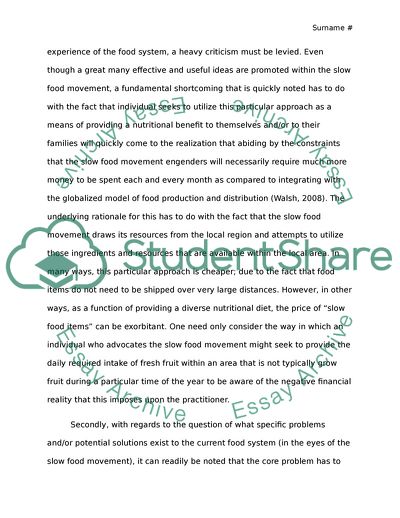Cite this document
(Food Activism - Slow Food Movement Essay Example | Topics and Well Written Essays - 1500 words, n.d.)
Food Activism - Slow Food Movement Essay Example | Topics and Well Written Essays - 1500 words. https://studentshare.org/sociology/1810407-food-activism-research-essay-the-slow-movement
Food Activism - Slow Food Movement Essay Example | Topics and Well Written Essays - 1500 words. https://studentshare.org/sociology/1810407-food-activism-research-essay-the-slow-movement
(Food Activism - Slow Food Movement Essay Example | Topics and Well Written Essays - 1500 Words)
Food Activism - Slow Food Movement Essay Example | Topics and Well Written Essays - 1500 Words. https://studentshare.org/sociology/1810407-food-activism-research-essay-the-slow-movement.
Food Activism - Slow Food Movement Essay Example | Topics and Well Written Essays - 1500 Words. https://studentshare.org/sociology/1810407-food-activism-research-essay-the-slow-movement.
“Food Activism - Slow Food Movement Essay Example | Topics and Well Written Essays - 1500 Words”. https://studentshare.org/sociology/1810407-food-activism-research-essay-the-slow-movement.


